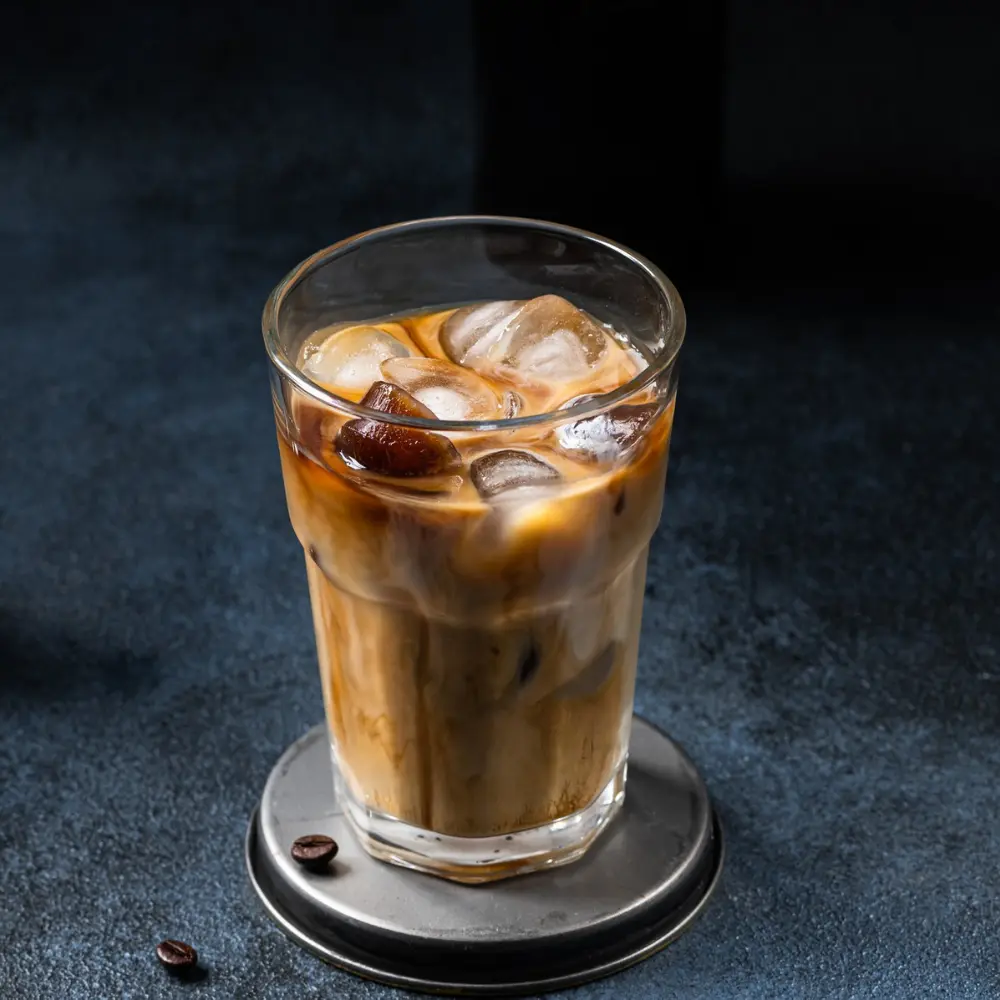A steaming cup of coffee – a ritual, a pick-me-up, a moment of serenity before the day’s hustle – is often the result of a series of carefully chosen elements. One of these elements, often overlooked but equally critical, is the coffee filter. But how do you navigate the realm of coffee filters, specifically the size 2 and size 4 variants? Welcome to our ultimate comparison guide, where we take a deep dive into the world of the Coffee Filter 2 vs 4.
Whether you’re a seasoned barista or a casual home brewer, knowing the nuances of these filters can elevate your coffee experience. After all, the secret to a great cup of coffee lies in the details – the bean type, the grind size, the brewing time, and yes, even the filter size. In the quest to find the best paper coffee filters for your needs, understanding the distinctions and overlaps of the size 2 and size 4 filters is essential. So, let’s get brewing, and in the process, find your perfect filter fit.
Coffee Filter 2 vs 4: Key Takeaway
- Size Matters: Size 2 and size 4 coffee filters differ primarily in their capacity and the brewing volume they cater to. Size 2 is suitable for smaller brews (1-2 cups), while size 4 is ideal for larger quantities (6-12 cups).
- Compatibility is Crucial: Not all coffee makers can accommodate all filter sizes. Always check the manufacturer’s recommendation to ensure the filter you choose fits your coffee maker.
- Flavor Factors: The size of your coffee filter can influence the taste of your brew. Size 2 filters may yield a crisper, cleaner cup, while size 4 filters might offer a fuller-bodied, robust flavor.
- Personal Preferences and Brewing Styles: Your unique coffee preferences and brewing style play a vital role in choosing between size 2 and size 4 filters. Determine your preferred taste and brewing method before making a decision.
- Experimentation is Key: Finding the perfect coffee filter for your needs may take some trial and error. Don’t be afraid to experiment with different filter sizes to discover what brews the most satisfying cup for you.
The Basics of Coffee Filters
Understanding the specifics of any topic requires a strong grasp of the basics. In the world of coffee brewing, filters are an often understated component that can drastically influence your beverage’s taste, aroma, and overall quality. This section will cover what coffee filters are, the different types available, and the role they play in the brewing process.
What Are Coffee Filters?
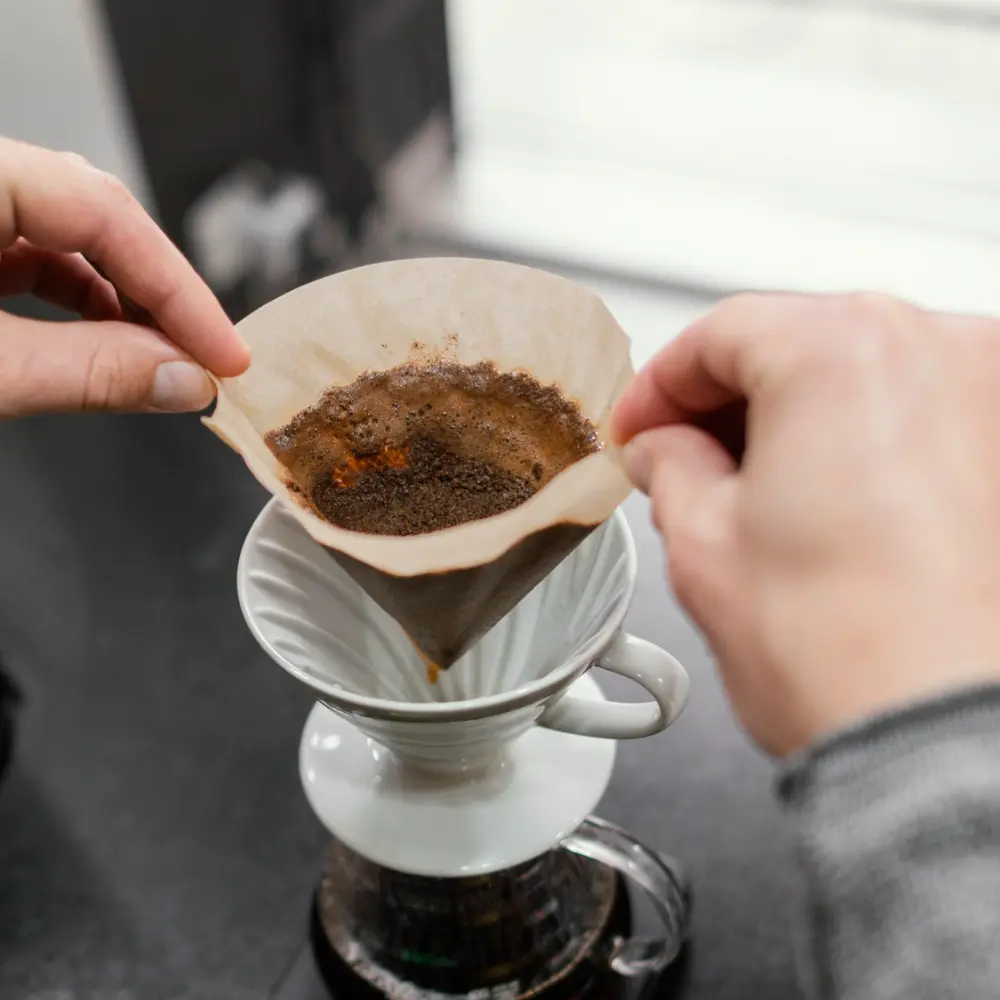
Coffee filters are sieves used in coffee brewing to separate the coffee grounds from the liquid brew. They’re typically made from paper, but can also be found in metal or cloth versions. (1) The filter size and material can affect the flow rate of the water through the coffee grounds, which in turn impacts the strength and flavor of the final brew. With a broad spectrum of filters to choose from, size 2 and size 4 paper filters are among the most popular for everyday home brewing.
Different Types of Coffee Filters
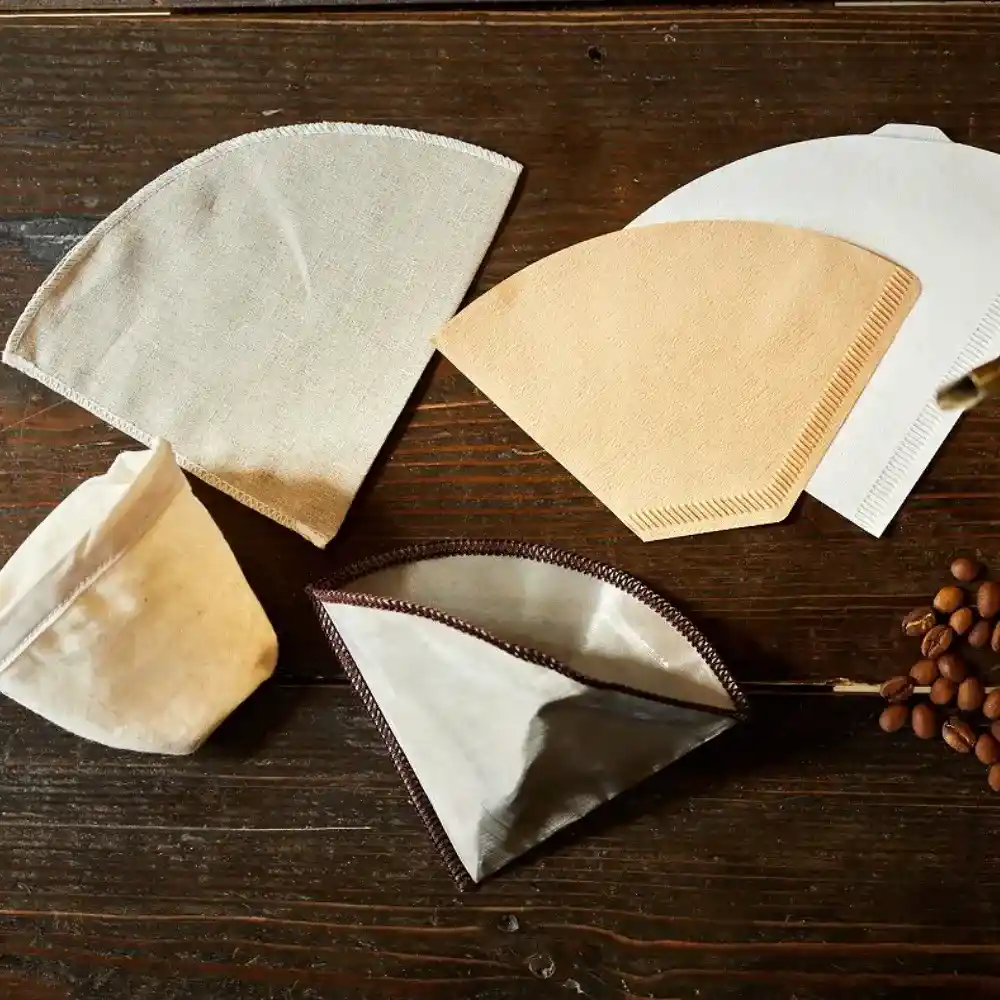
There are several types of coffee filters to cater to the varied brewing styles and preferences of coffee lovers worldwide. Here are the most common ones:
- Paper filters: These are the most widely used and come in bleached (white) and unbleached (brown) versions. They are disposable, making clean-up a breeze. Sizes 2 and 4 are the standard sizes for many home coffee makers.
- Metal filters: Usually made from stainless steel or gold, these filters are reusable. They allow more oils and fine particles into the brew, creating a full-bodied, rich cup of coffee.
- Cloth filters: Typically made of cotton or hemp, these filters are also reusable. They provide a balance between paper and metal filters, allowing some oils through but still producing a clean-tasting cup. These types of filters are perfect for coffee sock brewing.
- Permanent filters: These are usually plastic or metal filters designed to fit specific coffee maker models. They are environmentally friendly but require regular cleaning.
Purpose of Coffee Filters in Brewing
Coffee filters play a vital role in the brewing process, serving two primary purposes:
- Separation: The primary role of a coffee filter is to prevent coffee grounds from making their way into your cup, ensuring a smooth and sediment-free brew.
- Flavor extraction: The filter also plays a role in determining the brew’s flavor profile. It controls the water flow rate through the grounds, affecting the extraction of flavor compounds. For example, paper filters, including sizes 2 and 4, typically produce a cleaner, lighter brew as they catch more oils and fine particles.
Understanding these basic concepts forms the foundation of your journey into the world of coffee filters. As we move forward, we’ll dive deeper into the specifics of size 2 and size 4 filters, helping you discover their unique characteristics, and ultimately, find the best paper coffee filters for your needs.
Breaking Down the Size 2 Coffee Filter
Size does matter when it comes to coffee filters, and size 2 coffee filters are among the most widely used in household coffee brewing. Let’s delve into the specifications of these filters, their ideal brewing scenarios, and the advantages and drawbacks that come with their use.
Specifications of a Size 2 Coffee Filter
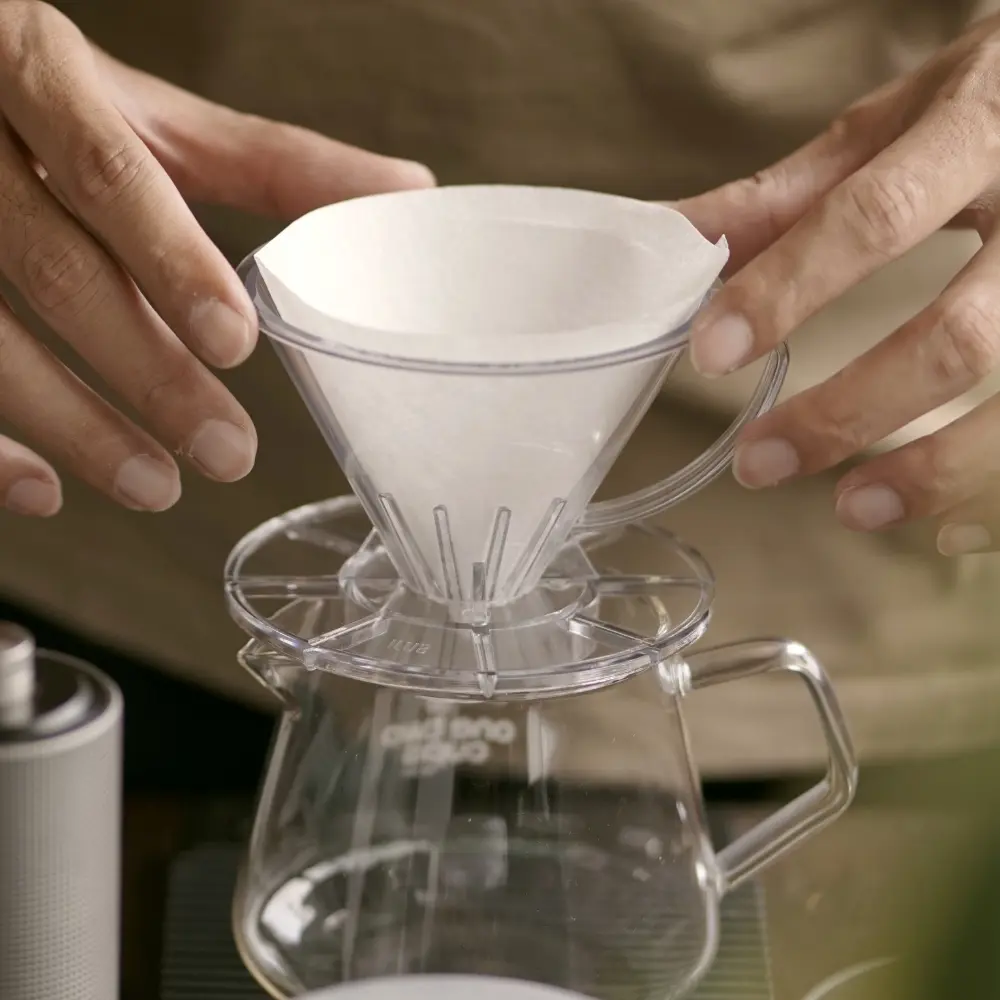
Size 2 coffee filters are typically cone-shaped, designed to fit specific coffee makers that call for this size. They are ideally suited for small to medium brews, typically handling one to two cups of coffee at a time.
These filters are usually made of paper, either bleached or unbleached, although you may also find metal or cloth variants. They measure about 4 inches in diameter from the bottom to the top. This size is compact enough for easy storage and large enough to allow for proper water flow and flavor extraction.
Ideal Brewing Scenarios for a Size 2 Filter
The size 2 filter is an excellent fit for single-serve and small-batch brewing. It’s perfect for those mornings when you’re making a quick cup for yourself or sharing a small pot with another coffee lover.

This filter size is also ideal for coffee makers with a 2-6 cup capacity, and it works well for pour-over brewing methods, delivering a clean, crisp flavor profile. Moreover, if you’re an espresso lover, the size 2 filter can serve as an efficient tool for brewing strong, flavorful shots.
Pros and Cons of Using Size 2 Coffee Filters
Gain valuable insights into the advantages and disadvantages of utilizing a size 2 coffee filter, empowering you to make an informed choice. Let’s carefully evaluate the positives and negatives to aid your decision-making process.
Pros:
- Suitable for small batches: Size 2 filters are perfect for brewing one or two cups of coffee, reducing wastage.
- Versatile: These filters can be used in various coffee makers and pour-over setups.
- Enhanced Flavor: They deliver a clean, well-defined flavor by filtering out most coffee oils and fine particles.
Cons:
- Limited Capacity: These filters may not be suitable for brewing larger quantities of coffee at once.
- Availability: Some coffee makers may not accommodate size 2 filters, limiting their usability.
Ultimately, whether a size 2 coffee filter is right for you will depend on your specific brewing needs and preferences. As we proceed, we’ll explore the other side of the debate: the size 4 coffee filters, and see how they measure up.
Exploring the Size 4 Coffee Filter
Now that we’ve dissected the size 2 coffee filter, let’s turn our attention to the size 4 filter. This larger alternative is often a go-to for larger brews and specific coffee makers. We’ll investigate its specifications, ideal usage scenarios, and the potential benefits and drawbacks of using size 4 coffee filters.
The Anatomy of a Size 4 Coffee Filter
Size 4 coffee filters are generally cone-shaped, with a wider base and taller height than their size 2 counterparts. Specifically, they typically measure approximately 5 inches tall and 7,5 inches wide. These dimensions make them well-suited for brewing larger quantities of coffee in one go.
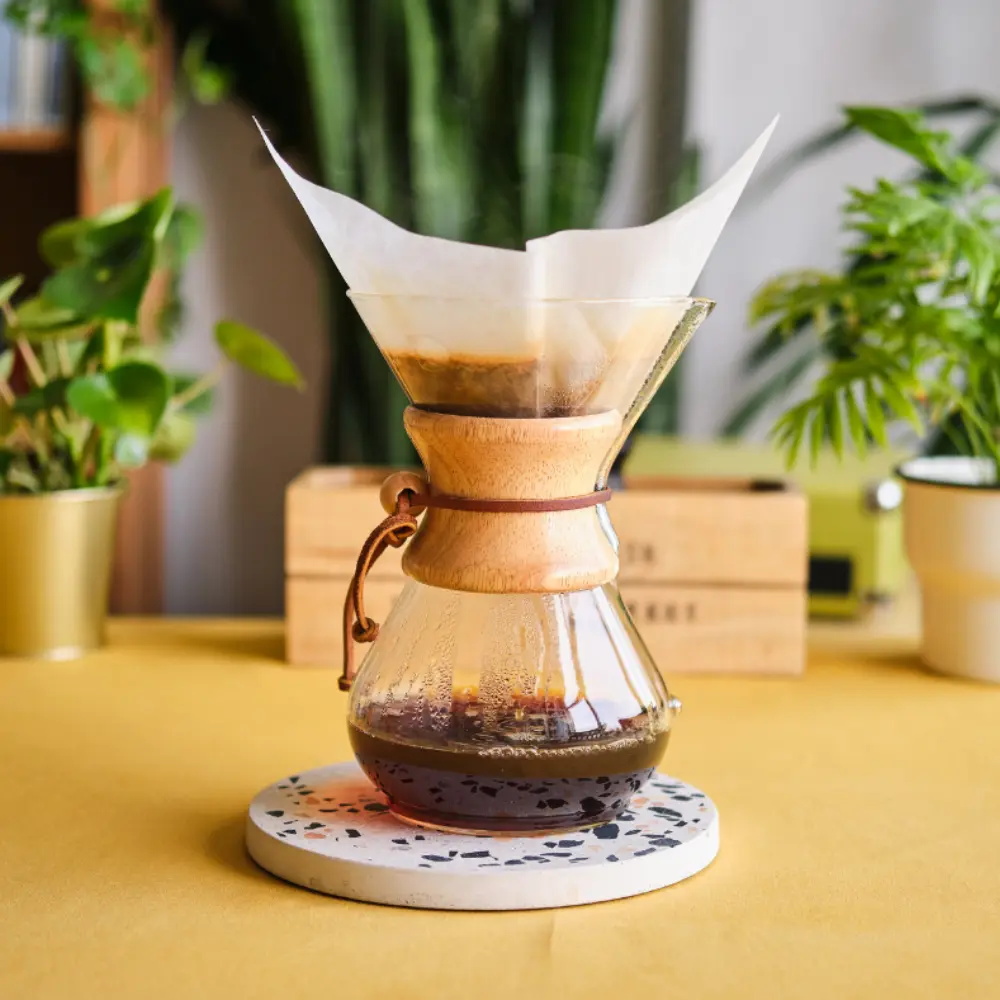
Similar to size 2 filters, size 4 coffee filters are most commonly made of paper, both bleached and unbleached, but can also be found in metal and cloth variants. Their larger size allows for a more prolonged water-coffee contact time, potentially influencing the brew’s flavor and strength.
When to Use a Size 4 Filter for Best Results
Size 4 coffee filters are designed for larger brews, generally suitable for coffee makers with a 6-12 cup capacity. This makes them an excellent choice when you’re serving coffee for a group or prefer to prepare a large pot to consume over time.
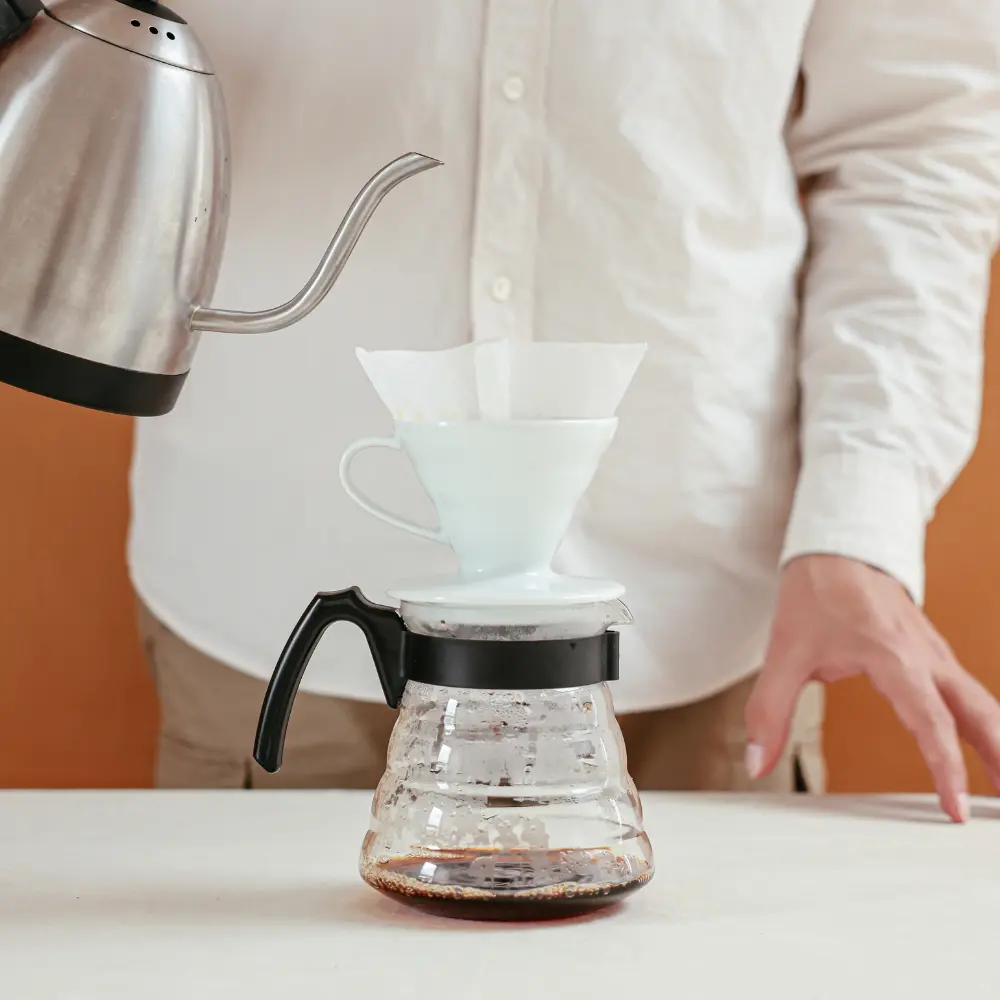
These filters are perfect for regular drip coffee makers, pour-over brewers, and any brewing method requiring a larger volume of coffee. When used correctly, they can help extract a robust, full-bodied flavor from your coffee grounds, making them a preferred choice for many coffee enthusiasts.
Pros and Cons of Using Size 4 Coffee Filters
Just like with size 2 filters, there are advantages and drawbacks to using size 4 coffee filters. Here’s a brief overview:
Pros:
- Ideal for Larger Brews: Size 4 filters are excellent for brewing more significant amounts of coffee without needing to replace the filter.
- Versatile: These filters can fit various coffee makers and are also suitable for different pour-over setups.
- Flavorful Brew: The larger size allows for longer water-coffee contact, often resulting in a richer, fuller-bodied coffee.
Cons:
- Not Suited for Small Batches: Brewing a small amount of coffee in a size 4 filter might lead to suboptimal flavor extraction.
- Availability: Not all coffee makers can accommodate the larger size 4 filters.
In the end, your choice between size 2 and size 4 filters will depend on your specific brewing needs, the number of coffee drinkers, and the type of coffee maker you use. Now that we’ve explored both options let’s put them side by side and see how they compare.
Side-by-Side Comparison: Size 2 vs Size 4 Filters
Now that we’ve individually explored the size 2 and size 4 coffee filters, it’s time to bring them head-to-head. This section will illuminate the differences and similarities between these filters, culminating in a comparison based on real-world user experiences, effectively outlining the coffee filter 2 vs 4 debate in a practical context.
Differences between Size 2 and Size 4 Filters

Though both filters serve the same purpose – separating the coffee grounds from your brew – there are key differences between size 2 and size 4 filters that could impact your coffee experience:
- Size: As the numbers suggest, size 2 filters are smaller than size 4. This affects the filter’s capacity and the amount of coffee you can brew in a single batch.
- Brewing Volume: Size 2 filters are ideal for smaller brews, typically serving one to two cups at a time. In contrast, size 4 filters can handle larger brews, making them more suitable for group servings or a day’s worth of coffee for one person.
- Coffee Maker Compatibility: Not all coffee makers are designed to accommodate all filter sizes. While size 2 filters are typically used in 2-6 cup coffee makers, size 4 filters are designed for machines with a 6-12 cup capacity.
Similarities between Size 2 and Size 4 Filters
Despite the differences, size 2 and size 4 filters share several common features:
- Shape: Both filter sizes typically come in a cone shape, designed to enhance flavor extraction during the brewing process.
- Material: Size 2 and size 4 filters are available in the same materials, including paper (bleached and unbleached), metal, and cloth.
- Function: Regardless of size, both filters perform the same essential function of filtering out coffee grounds and contributing to flavor extraction.
Real-World User Experiences with Size 2 and Size 4 Filters
Now that we’ve compared the technical aspects of size 2 and size 4 filters let’s consider some real-world experiences:
- Size 2 Filters: Users appreciate size 2 filters for their versatility and suitability for single-serve coffee makers. They are often lauded for the crisp, clean taste they impart to the coffee. Some users, however, find them limiting when they want to brew larger quantities.
- Size 4 Filters: Users enjoy the convenience of brewing more coffee at once with size 4 filters. They are praised for their ability to produce a robust, full-bodied flavor. The downside for some users is that these filters may not fit all coffee makers and may not be ideal for smaller batches.
The choice between size 2 and size 4 filters ultimately comes down to personal preference, your coffee maker’s specifications, and your typical brewing volume. As we continue, we’ll guide you toward making the right choice that aligns with your needs and coffee-drinking habits.
Making the Right Choice: Which Filter Suits Your Needs?
Armed with an understanding of the intricacies of size 2 and size 4 coffee filters, it’s time to make the all-important decision: which filter is right for you? We’ll delve into considerations when choosing coffee filters, how personal preferences and brewing styles come into play, and finally, provide recommendations for various coffee makers.
Considerations when Choosing Coffee Filters
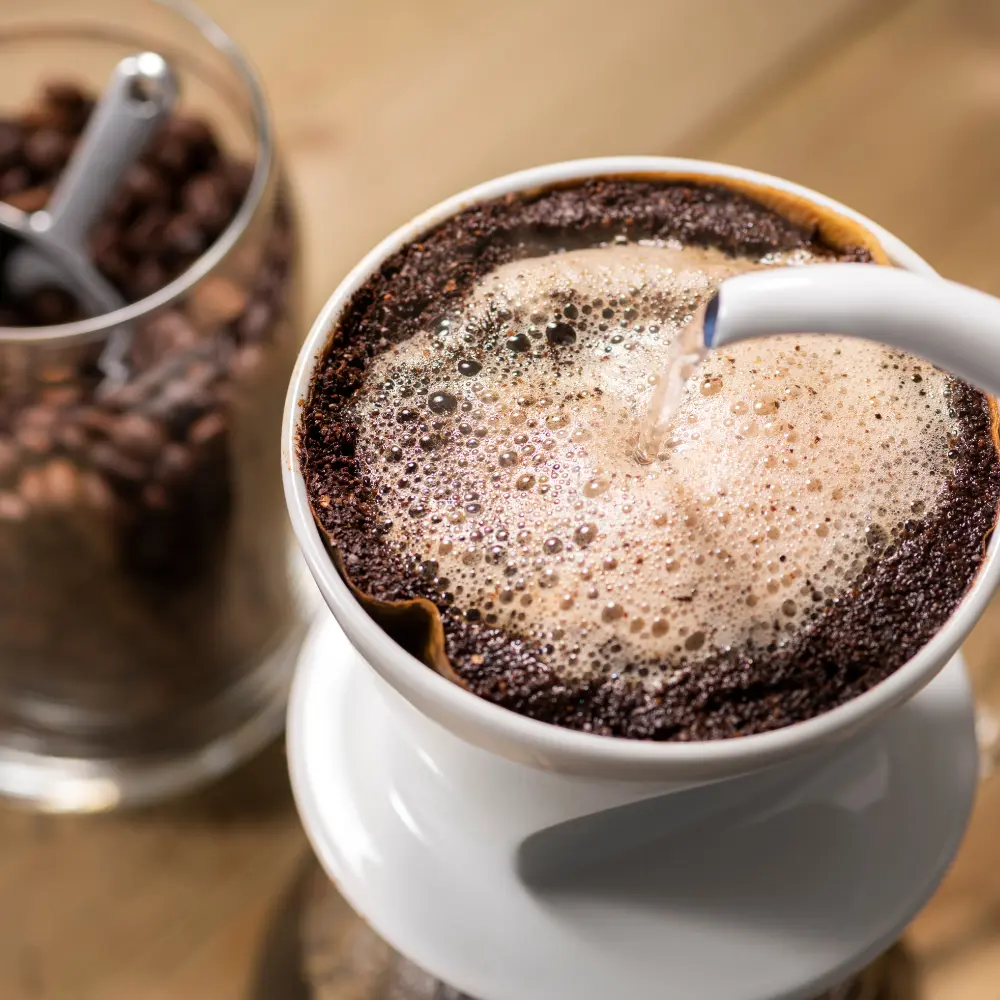
When choosing between a size 2 and size 4 coffee filter, there are several factors to consider:
- Brewing Volume: How much coffee do you typically brew at once? If you usually brew a cup or two at a time, a size 2 filter might be your best bet. However, if you frequently brew larger quantities, a size 4 filter could be a more convenient option.
- Coffee Maker Compatibility: Ensure that the filter size you choose is compatible with your coffee maker. While some coffee makers can accommodate multiple filter sizes, others may require a specific size.
- Flavor Preference: The size of the filter can affect the coffee’s taste. Size 2 filters can produce a clean and crisp brew, while size 4 filters may yield a stronger, more robust flavor due to the longer contact time between the water and coffee grounds.
Personal Preferences and Brewing Styles
Your personal coffee preferences and brewing style also play a crucial role in deciding between a size 2 and size 4 filter:
- Taste: If you prefer a lighter, cleaner cup of coffee, you might gravitate towards a size 2 filter. But if you love a full-bodied, robust flavor, a size 4 filter could be your ideal match.
- Brewing Style: If you’re a fan of pour-over coffee, both size 2 and size 4 filters can work, depending on the volume you’re brewing. For single-serve coffee makers or espresso machines, size 2 filters are often more appropriate.
Coffee Filter Recommendations for Various Coffee Makers
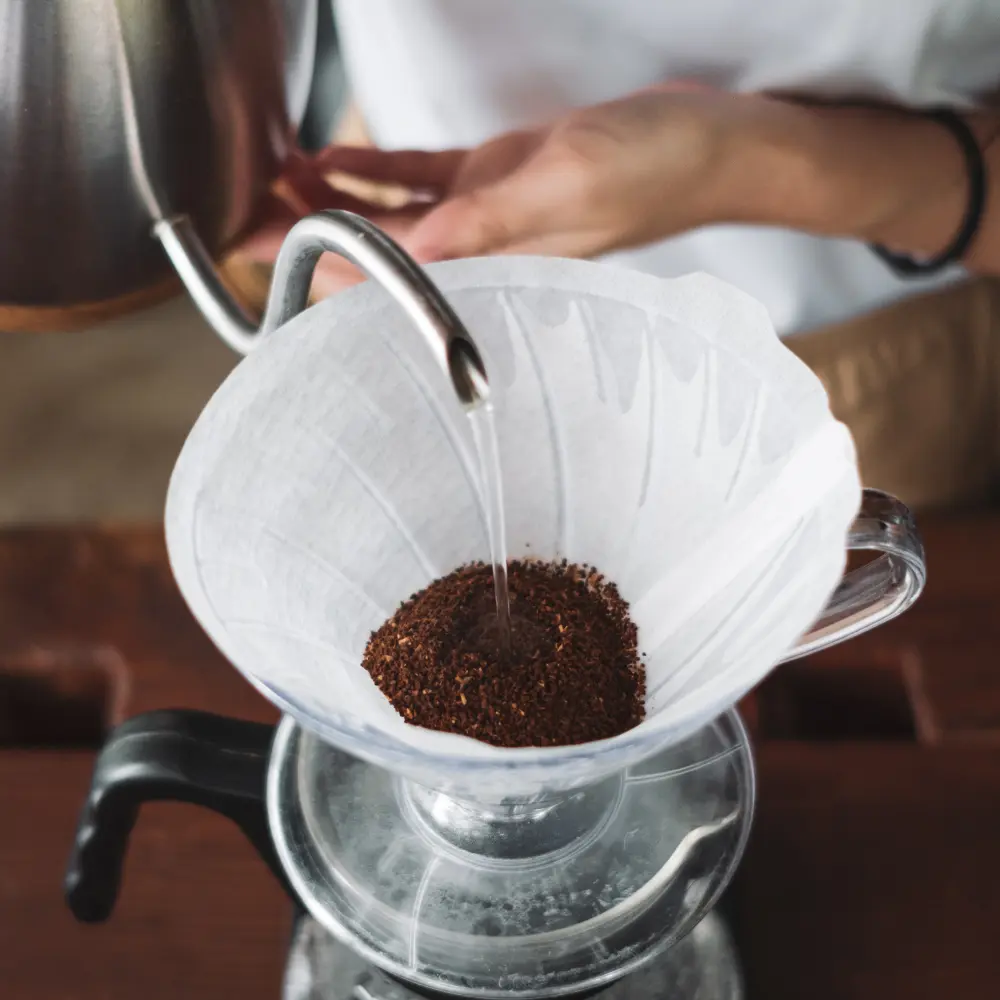
Different coffee makers can accommodate different filter sizes. Here are some recommendations:
- Single-Serve Coffee Makers: Size 2 filters are usually more suitable due to the smaller brewing volume.
- Standard Drip Coffee Makers: Depending on the model and the number of cups it brews, you could use either size 2 or size 4 filters. Always check the manufacturer’s recommendations.
- Pour-Over Brewers: Both sizes can work, depending on your preferred brewing volume. Smaller pour-over cones are well-suited to size 2, while larger ones can comfortably accommodate size 4 filters.
Conclusion
Remember, the best coffee filter for you is the one that matches your coffee consumption habits, fits your coffee maker, and most importantly, produces the flavor profile you love.
Deciding between size 2 and size 4 coffee filters may seem a small detail, but for coffee aficionados, it’s these small details that can elevate your brewing experience. This Coffee Filter 2 vs 4 comparisons aimed to bring clarity to the differences, similarities, and specific applications of these two filter sizes, providing insights into how each can influence the flavor and strength of your brew.
Ultimately, the choice between size 2 and size 4 coffee filters will depend on a balance of factors: your coffee maker’s requirements, your typical brewing volume, and the taste profile you enjoy most. Remember that the world of coffee is full of personal choices, and finding what suits you best can take some experimentation.
May your coffee journey be full of intriguing tastes and delightful discoveries. And whether you choose a size 2 or a size 4 coffee filter, may every cup bring you joy and satisfaction. After all, isn’t that what coffee is all about? Happy brewing!
FAQ
Is a Size 2 or Size 4 coffee filter better for my brewing style?
It depends on your brewing style and the volume of coffee you typically brew. Size 2 is best for smaller quantities and single-serve coffee makers, while Size 4 is great for larger brews and standard drip machines.
Can I use a Size 2 coffee filter in place of a Size 4, and vice versa?
It depends on your coffee maker. While some can accommodate both sizes, others might require a specific size. Always check the manufacturer's recommendation.
How do Size 2 and Size 4 coffee filters affect the taste of my coffee?
Size 2 filters often yield a crisper, cleaner cup, while Size 4 filters might offer a fuller-bodied, robust flavor due to longer water-coffee contact.
What are the environmental impacts of using Size 2 vs Size 4 coffee filters?
The environmental impact largely depends on the material of the filter rather than the size. Both sizes come in eco-friendly options like unbleached paper, metal, and cloth. Remember to compost paper filters and reuse metal or cloth filters to minimize waste.


















